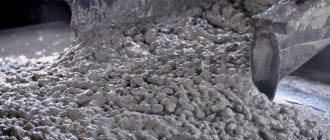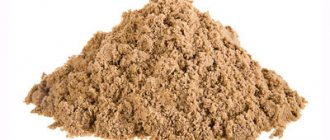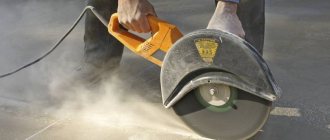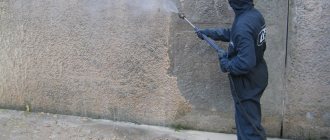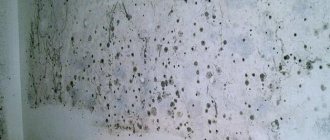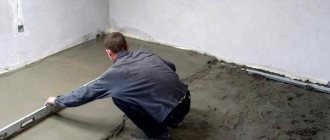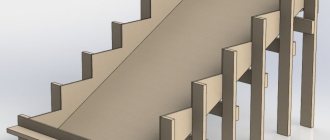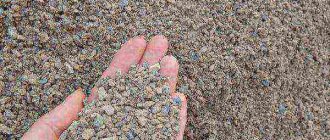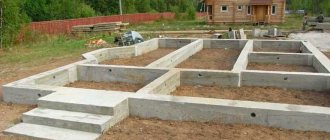What is this parameter - surface modulus? We have to get acquainted with a new concept and study ways to calculate its values for real structures. In addition, we will touch on the basics of winter concreting and the influence of the surface modulus on the work methods used.
The topic of the article is directly related to winter concreting.
How to calculate the concrete surface modulus and what is the indicator for?
The quality of the laid coating is assessed using the concrete surface modulus, namely the ratio of the concrete area to its internal volume. If this parameter is incorrectly determined and the temperature regime during hardening is not observed, various defects in the structure arise as a consequence. Contact of the surface with an unfavorable environment can also cause corrosion and cracks inside the building material, and as a result, the composition deteriorates faster.
- Modulus of the surface of a concrete structure
- The importance of correct definition
- Modulus definition and formula
- How to calculate the surface modulus of concrete for various shapes
Caring for concrete in summer: wet maintenance method.
The main task of wet maintenance is to ensure contact of the concrete surface with water and protection against drying shrinkage
.
A) The reason for plastic shrinkage of the concrete mixture
is the evaporation of water from the surface of the concrete mixture or its absorption by surrounding layers of dry concrete, formwork, and soil.
B) The reason for shrinkage of hardening concrete
is the rapid loss of water by concrete in conditions of low humidity, hot weather and strong winds.
There are several ways to protect concrete from drying shrinkage:
- spraying water on the surface of concrete;
- protection of concrete with burlap, which must be watered;
- watering foundation structures.
The temperature of the concrete mixture when concreting structures with a surface modulus of more than 3 should not exceed 30-35 degrees C, and for massive structures with a surface modulus of less than 3 - 20 0 C.
Surface modulus
is the ratio of the surface area of a product to its volume.
- If cracks appear on the surface of the laid concrete due to plastic shrinkage, repeated surface vibration is allowed no later than 0.5-1 hour after the end of its laying.
- Maintenance of freshly laid concrete (covering and watering) should begin immediately after the completion of laying the concrete mixture and should be carried out until 70% of the design strength is reached, and with appropriate justification - 50%.
- To intensify the hardening of concrete, solar radiation should be used by covering structures immediately after the concrete has set with rolled or transparent moisture-proof material or covering them with film-forming compounds.
- It is necessary to water structures on covered materials (burlap, under film).
Directly pouring cold water onto concrete during sunny periods is prohibited.
You can arrange a water pool 15-20mm high above the concrete after it has set.
What to do about it
Once the required value has been calculated, you need to apply it correctly. Whether the construction results in a strong, reliable building depends on correct use.
Heating and cooling speed
The lower the value obtained, the more cracks the concrete will be covered with if measures are not taken in time, which include maintaining the temperature at a uniform level and gradual cooling.
- less than 4 m-1 - up to 5°C per hour;
- from 5 to 10 m-1 - up to 10°C per hour;
- more than 10 m-1 - up to 15°C per hour inclusive.
Choosing a temperature maintenance method
There are several ways to provide gradual cooling without the use of electrical appliances. The level of their effectiveness depends on the value of the surface modulus.
- Heat the solution immediately before placing it in the mold. If the mixture is at a high temperature, the resulting concrete will be much stronger than under standard conditions. The structure will have time to settle before everything cools down.
- In addition to the main components, introduce into the solution special catalysts that accelerate the hardening process of concrete. The use of additional means will increase the strength of the structure and the amount of heat generated by internal processes.
- Another option for additives is associated with a decrease in the level of crystallization of liquid in the solidifying solution. The heat level does not increase, but the concrete will continue to gain strength at temperatures below 0°C.
Stripping
The process of removing supporting structures after concrete has acquired an initial level of strength in low temperature conditions differs from the standard one. When removing formwork and thermal insulation, those surfaces that were under cover are exposed to cold air, which can subsequently affect the level of their strength.
In this case, not only the modulus value is important, but also the reinforcement coefficient. This value determines the amount of reinforcement relative to the mass of concrete. To determine it, it is enough to add up the cross-section of each rod and divide the sum by the area of the upper part of the concrete slab. The value is expressed as a percentage.
- If the module does not exceed 5 m-1, the reinforcement coefficient is less than 1%, then the formwork should be removed only if the difference in temperature between concrete and air is less than 20°C.
- With a module less than 5 m-1, but a coefficient of 1-3%, the permissible difference increases by 10°C.
- If there is a lot of reinforcement, the coefficient is higher than 3%, then there will be no noticeable damage when removing the formwork with a temperature difference of 40°C between the air and the solution.
- For surface modulus above 5 m-1 the same values are used, but 10°C higher:
- less than 1% - 30°C;
- from 1% to 3% - 40°C;
- more than 3% - 50°C.
Technological map for curing concrete using the method
Public corporation
Design, Engineering and Technological Institute of Industrial Construction
OJSC PKTIpromstroy
TECHNOLOGICAL MAP
FOR CURING CONCRETE USING THE THERMOS METHOD AND USE OF
HEATED CONCRETE MIXTURES
Put into effect by Order of the General Plan Development Department No. 6 dated 04/07/98
Moscow - 1998
ANNOTATION
The technological map for curing concrete using the “thermos” method during the construction of monolithic structures was developed by PKTIpromstroy OJSC in accordance with the minutes of the seminar-meeting “Modern winter concreting technologies”, approved by First Deputy Prime Minister of the Moscow Government V.I. Resin and technical specifications for the development of a set of technological maps for the production of monolithic concrete works at subzero air temperatures, issued by the Moscow General Plan Development Department.
The map contains organizational, technological and technical solutions for curing concrete using the “thermos” method, which provides for laying the concrete mixture into formwork with an initial temperature of 10, 20, 30 °C, and preliminary electrical heating of the mixture when laying it in formwork with an initial temperature of 50 °C. The “thermos” method is one of the most effective and its use in concrete (reinforced concrete) work at subzero air temperatures should help speed up work, reduce labor costs and improve the quality of constructed structures.
The technological map contains the scope of application, recommendations for the organization and technology of work, requirements for quality and acceptance of work, the need for material and technical resources, safety solutions and the main parameters of thermos curing of monolithic structures. The initial data and design solutions for which the map was developed were taken taking into account the requirements of SNiP, as well as the conditions and features characteristic of construction in Moscow.
The technological map is intended for engineering and technical workers of construction and design organizations, as well as work producers, foremen and foremen involved in the production of concrete (reinforced concrete) work.
The technological map was developed by:
Yu.A. Yarymov - ch. project engineer, work manager; HELL. Myagkov, Ph.D. — responsible executive from TsNIIOMTP; A.I. Tvorogov Ph.D.; V.N. Kholopov; T.A. Grigorieva, L.V. Larionova, I.B. Orlovskaya, E.S. Nechaeva - performers.
V.V. Shakhparonov, Ph.D. — scientific and methodological guidance and editing.
S.Yu. Jedlicka, Ph.D. — general management of the development of a set of technological maps.
CONTENT
| 1 area of use . 22. Organization and technology of work execution. 43. Requirements for quality and acceptance of work. 104. Requirement for material and technical resources. 135. Safety solutions. 146. Technical and economic indicators. 14Appendix 1. Examples of determining the surface modulus “MP” of some structures. 15Appendix 2. Example of using a technological map. 15Appendix 3. Example of determining the strength of concrete. 16Appendix 4. Example of calculating the selection of electrical power. 17Literature. 20 |
APPLICATION AREA
1.1. The essence of the method is to heat the concrete by heating the aggregates and water or concrete mixture at the construction site before laying it in the formwork and using the heat released during hardening of the cement to acquire a given strength for the concrete during its slow cooling in the insulated formwork.
Source: https://www.gosthelp.ru/text/Texnologicheskayakartanav.html
Definition of quality
If we talk about the ideal time for carrying out concrete work outdoors, then this is certainly the warm season. During such a period, as a rule, positive temperatures prevail, there is no large amount of precipitation, stable sun, due to the heating of which the texture of the material quickly hardens. Unfortunately, it is not always possible to work under such conditions; most often construction is carried out at low temperatures.
During the process of concreting under frost, the main problem appears, the essence of which is the increase in the strength of concrete and the beginning of crystallization of water in it. The main methods for solving it include creating thermal insulation of the formwork or special heating of the laid mixture.
The choice of solution depends on how quickly the mold with the embedded material will harden. This can be determined using special formulas and the ratio of the area to the cooled surface and its volume. The concrete surface modulus helps to solve a number of issues and determine how quickly, in contact with cold air, a given area can harden.
When calculating the modulus in winter, one must take into account the fact that the process of concrete gaining strength stops when the temperature cools to 0 degrees. Only those parts of the surface that are in contact with colder air are considered to be cooled.
Experts advise using additional heating elements that will help quickly solve the problem of hardening of the laid monolith.
Treatment of winter concrete
If, after gaining full strength, winter concrete and monoliths made from unprepared concrete of normal humidity are processed quite traditionally, then perforation and arrangement of openings in the monolith before it gains strength has its own specifics.
Simply put, frozen concrete that has not reached its original strength should not be crushed with a jackhammer or hammer drill. In this case, cracks may appear.
Before reaching full strength, concrete cracks easily.
The optimal way to construct openings is to create formwork for them at the stage of pouring the monolith. Among other things, in this case it is possible to fully anchor the edges of the reinforcement along the edges of the opening. Where this is impossible and the opening will have to be cut in place, corrugated reinforcement is used: the corrugation on its surface itself serves as an anchor for the rod.
Useful: to make a hole (for example, a vent or to enter communications in a strip foundation), when pouring it with your own hands, it is enough to lay an asbestos-cement or plastic pipe of the appropriate diameter into the formwork.
The photo shows the simplest way to install vents.
For the actual processing where it is impossible to do without it, a diamond tool is preferable. Diamond drilling of holes in concrete does not require the use of impact mode; as a result, there is less likelihood of cracks and chips. Cutting reinforced concrete with diamond wheels leaves the cut edges perfectly smooth and, which is very convenient, does not require changing the cutting wheel when cutting reinforcement.
Temperature support
Let's look at the concrete surface modulus in more detail. Almost everywhere there is information about the importance of maintaining a stable temperature. Various techniques can be used for this.
If the surface modulus is in the range from 6 to 10 meters, then it is advisable to heat the mixture before placing it in the mold. With this option, the cooling period to the critical temperature increases, hot concrete sets faster and gains the required strength. This is an effective option for quick work. The second method is to use additional elements that are introduced into the mixture immediately before laying and accelerate its hardening. For example, high-grade fast-hardening Portland cement. This can also be achieved by increasing the amount of concrete.
As for the alternative approach, it comes down to lowering the temperature using water crystallization. Special elements are also added here that increase strength even at low temperatures. With the right choice of hardening method, based on deductions from the surface modulus, you can get a high-quality result and a durable surface without imperfections and cracks.
Calculation features
It is best to work with concrete outdoors in the warm season. However, this is not always possible because construction has to continue in winter. The main problem that arises when working with concrete mixtures in winter is the need to allow the material to gain strength before the process of crystallization of water in the mixture begins. To solve this problem, you have to heat the solution or thermally insulate the formwork.
When choosing one of these methods, it is necessary to proceed from the cooling rate of the mold with the material. To determine the rate at which the array gives off heat, the following formula is used:
The ratio of the area of the cooled surface to its internal volume is called the concrete surface modulus. The formula for calculating it is as follows:
The unit of measurement for this indicator is m -1 or 1/m. It should be noted that concrete stops gaining strength at a temperature of about 0 degrees. Cooled parts of the structure are those that come into contact with colder air or other elements of the structure.
In practice, calculating the concrete surface modulus is a rather labor-intensive process, since the structural elements of a building can have a complex geometric shape. To simplify the task in construction, it is customary to use simplified formulas for calculating the most common structural elements. You can see them in the table:
Modulus of elasticity: what is it and its units of measurement
Back in the middle of the 17th century, scientists in many countries began to study materials. They used various techniques and technologies to determine strength characteristics. A scientist from England, Robert Hooke, formulated the main rules for the elongation of elastic bodies under the influence of a load, thanks to him the concept of Young's modulus was introduced.
According to Hooke's law, absolute tension/compression is directly proportional to the applied load with a coefficient of proportionality. This value is called the elastic modulus and is measured in the following units:
- kgf/sq. cm;
- t/sq. m;
- MPa.
The value is denoted by the letter E and has different values, and also depends on various factors. In laboratory studies, coefficients were obtained and summarized in general tables. The characteristics of the indicator are determined according to standard 52-101-2003.
Features of non-destructive research
When choosing a particular device to measure the strength of concrete using a non-destructive method
, it is worth understanding the basis on which test results and conclusions about the characteristics of the material are formed. None of the methods used is perfectly accurate. They all operate with certain assumptions.
When testing without destruction, an impact of a certain kind is produced, the magnitude of which is determined by one or another characteristic of the concrete. Based on the known correlation obtained as a result of comparison of destructive testing and non-destructive testing, the values of the measured indicator are extrapolated.
The concept of elastic modulus
All solids are subject to deformation as the load increases. Moreover, at first the changes are reversible, and their dependence on the applied efforts is linear.
The body restores its size and shape after the cessation of external influence. Hooke's law applies here, where absolute compression or elongation is directly proportional to the applied force with a coefficient of proportionality equal to the modulus of elasticity.
With increasing load, the body enters a phase of irreversible changes, where deformations are of an inelastic plastic nature. In this zone, elongation or compression of samples during testing occurs without a significant increase in external force.
Types of base
Based on the ratio of the surface of the wall and the base, the latter is divided into three types:
- flush;
- sinking;
- speaker
The flush plinth does not extend beyond the walls, the sinking plinth is located deeper than the plane of the facade, and the protruding plinth is built wider than the level of the walls.
The base, located on the same level with the walls, makes it difficult to provide high-quality moisture protection. Visually, buildings with such a base lack grace and look like a box.
A protruding plinth is used in the construction of houses in a classical style
How is the elastic modulus of concrete B20 determined?
The modulus value for all classes of material is determined in accordance with SP 52 101 2003. The table of the normative document contains the values of all the necessary coefficients for performing calculations. The algorithm for determining the indicator involves performing experimental studies on standard samples.
Diagram of elastic modulus of concrete B20
In the specialized literature, the parameter is denoted by the capital letter E and is known among professional designers as Young’s modulus.
It has different values depending on the effective load and the structure of the concrete:
- the value of the initial modulus of elasticity corresponds to the initial state of concrete, which accepts plastic deformation without cracking of the mass;
- the reduced value of the elastic modulus characterizes the loading stage, after which the concrete loses its integrity as a result of irreversible destruction.
Carrying out special calculations and knowing the value of the modulus of elasticity, specialists determine the safety factor of arch-type structures, road and railway bridges, as well as building floors.
After the construction of a structure or structure, it is actually possible to conduct reliable comprehensive tests of concrete for strength, frost resistance, humidity and moisture permeability only in the laboratory. Within the framework of non-destructive testing, it is possible to roughly determine the class of concrete using ultrasonic diagnostic methods.
And if, after such an expert examination of the sample, doubts arise about the unambiguous classification, then to assess the strength characteristics of concrete, a sample is taken - a core - directly at the construction site. To practically determine the elasticity coefficient of the material and provide actual documentary evidence, an independent examination of concrete is carried out.
Very often, unscrupulous contractors save money on materials and do not purchase/use concrete of the class specified by the project at the site. As a consequence, a lower modulus of elasticity leads to premature destruction of the structure.
Elimination of defects
If there are large defects on the surface, then part of the structure is refilled. In this case, the defective area is cleaned down to normal concrete, after which repairs are performed. More often, for this work, mixtures made on the basis of high-strength cements or quick-hardening cements, polymer solutions and fiber-reinforced concrete are used.
The most important thing in this process is to achieve strong adhesion of the base to the poured layer, therefore special technologies are used to strengthen this bond. This is often accomplished by filling the jackets or applying a repair layer >10 cm thick.
The concreted area must be well buried so that it is of the required thickness. Good results can be achieved by reinforcement with steel mesh. It is attached to old concrete with dowels or other means. In this case, the base is first cleaned and washed. The aggregate must be well exposed to create a rough surface.
Prepare concrete for repair in the following ways:
- Mechanical – the work uses industrial hammer drills, chippers, shot blasting and sandblasting equipment, grinding equipment and cutters. It is not recommended in cases where there should be no dust.
- Thermal - use oxygen or propane burners. Heat the surface to 90 C. It is good for surface defects (up to 5 mm) when the material contains rubber, oil and other organic materials. After such treatment, hydraulic or mechanical treatment is used;
- Chemical - use special compounds. It is used if mechanical processing is not possible. After using chemicals, the surface is thoroughly washed with water;
- Hydraulic - use high pressure technology (12-18 MPa and 60-120 MPa). It cannot be used only if the air humidity cannot be increased.
If there are areas of defective concrete on the concrete products, then they are cut out so that the result is a rough and textured surface, without dust, concrete crumbs and other contamination factors. The rusted reinforcement is cut out and a new reinforcing mesh is knitted. Sometimes it is necessary to take an integrated approach.
Sand - what it is and what it is needed
Sand can also be different. Moreover, the final result directly depends on the quality of this component.
According to their granulometric composition, sands are divided into:
Thin (less than 1.2 mm).
Very small (1.2 - 1.6 mm).
Small (1.6 - 2.0 mm).
Medium (1.9 - 2.5 mm).
Large (2.5 - 3.5 mm).
Another important parameter that needs to be taken into account is the moisture content of the sand. Even dry-looking material can contain up to 2% water, and wet material can contain up to 10%. This can upset the proportions of the concrete and cause a decrease in strength in the future.
How to ensure the quality requirements of a concrete surface
About lubrication
When constructing monolithic concrete structures, the quality of concrete surfaces is ensured directly during the concreting process without the use of special finishing methods. The only exception is one finishing method - ironing of horizontal surfaces, used for surfaces that must meet the requirements of low abrasion and high density. This method is described in detail in the article “Cement ironing”.
Ironing of concrete blind area
To ensure the quality of the surfaces of concrete structures without the use of special finishing methods, it is necessary:
- prevent concrete from sticking to the formwork deck;
- fulfill the requirement for the size of pores and cavities and their number on the surface of a concrete monolithic structure.
Special lubricants for formwork help cope with this task. High-quality lubricant provides good adhesion to the formwork deck and at the same time poor adhesion to the concrete surface. The choice of lubricant depends on:
- formwork material;
- location of the formwork – horizontal or vertical;
- method of applying lubricant to the formwork;
- on the type of plasticizers in the concrete mixture.
The main purpose of the lubricant is to reduce the effort required to tear the formwork away from the concrete when stripping the structure. Previously, clay, lime-clay, chalk, and talc compositions were used for these purposes. However, their use did not exclude corrosion of metal formwork, the formation of greasy or rusty stains on the concrete surface, and did not reduce the number and size of air pores. In addition, the formwork forms were overgrown with cement stone.
Later they began to use lubricants based on petroleum products, incl. based on diesel fuel and lubricating oils. These lubricants were already better, but at the same time, a large number of pores formed on the concrete from the pinched air, dark oil stains appeared, and during the operation of the building, the finishing layer peeled off and peeled off in this place. Therefore, they began to use lubricants based on machine, brake, and spindle oils in combination with solid oil, paraffin, and petrolatum.
In addition to the use of formwork release agent, good quality of the concrete surface is ensured by displacing air from the formwork during the process of feeding and compacting the concrete mixture. When concreting, it is necessary to avoid air entrapment on the surface of the formwork as much as possible. To do this, it is important to follow the compaction regime and use plasticizing additives correctly.
About compaction of mobile concrete mixtures
Movable and highly mobile concrete mixtures contain a large amount of cement glue and mortar, so they quickly liquefy and compact. Compaction of mixtures of grades P, P2, P3 is carried out by vibration. Mixtures of grade P4 and higher are self-leveling, since they spread and compact under their own weight, so they are only leveled and smoothed.
Areas of uncompacted concrete are not allowed.
In general, the more fluid the concrete mixture, the greater the likelihood of it separating. As the mobility of the mixture increases, the viscosity of the solution included in its composition decreases and the mixture is less able to hold the coarse aggregate in suspension.
When concreting monolithic structures with highly fluid and cast mixtures, the formwork is filled either from one end or from the middle. With this filling, maximum displacement of air from the formwork occurs. With other formwork filling schemes, air may remain (pinched) both inside the mixture and on the formwork.
The duration of vibration of moving concrete mixtures is:
- for P1 brand mixture – 25-35 s;
- brand P2 – 18-25 s;
- brand P3 – 10-20 s;
- grade P4 – 7 s;
- brand P5 – no more than 5 s.
FAST
SEO optimization
Adaptive layout
Repair in the regions
- home
- Construction
- Installation of prefabricated reinforced concrete structures
- Warming up the concrete
Work on installation of assembly, concrete and reinforced concrete structures at temperatures from +5 to 0°C is considered winter. For monolithic concrete and reinforced concrete structures with non-prestressing reinforcement, the strength of concrete at the time of the possibility of freezing must be at least 50% of the design strength for a given concrete grade up to 150; not less than 40% - for concrete grades 200 and 300 and not less than 30% - for concrete grades 400 and 500. For structures with prestressed reinforcement - not less than 70% of the design strength and for structures for which the design imposes special requirements - 100%.
The PPR must define methods for the thermal and moisture regime of maintaining and warming up concrete and insulating formwork and open surfaces of concrete, as well as the duration and order of stripping and loading structures: Concrete laid in winter conditions should be cured primarily using the thermos method (insulated formwork and warm covering of exposed surfaces). The concrete mixture must be preheated before laying. Chemical additives, cements with increased heat generation and quick-setting cements, as well as peripheral heating (SNiP III-15-76) should be widely used.
Concrete is heated only when concreting thin monolithic structures using an electric current passed through the concrete. When heating concrete with electric heaters, its exposed surfaces must be strengthened. Concrete with plasticized cements and plasticizing additives should be heated only according to special instructions developed for these materials.
The structures are stripped and loaded after testing the control samples. The structures are demolished after the temperature of the concrete has dropped to 5° C. However, the formwork should not be allowed to freeze to the concrete. Structures with removed formwork are temporarily covered if the temperature difference between concrete and outside air exceeds 20° C for structures with a surface modulus equal to 5, and 30° C if the surface modulus is higher than 5. Surface modulus Mn is the ratio of the surface of structures S to their volume V:
Mn = S / V Thus, the modulus of the surface of a cube with a side of 1 m will be equal to 6.
When curing concrete using the thermos method, electric and steam heating, as well as in greenhouses, the concrete mixture is prepared using heated inert gases and hot mixing water, and when laying it must have a positive temperature. The temperature of the concrete components should be ensured by the end of concrete laying: when maintaining using the thermos method - according to calculation, not lower than +5 ° C - when using external heating of concrete; not lower than +10° C - when laying concrete “with raisins” (Table 1).
